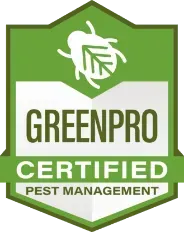How to Pest-Proof Your Home Before Winter

As winter approaches in Utah, pests like mice, spiders, and cockroaches start seeking warmth and shelter indoors. For homeowners, this means it's crucial to prepare your home to keep these unwelcome guests out. Pest-proofing your home before winter not only protects your property but also ensures a safe and healthy living environment for your family. In this guide, we'll walk you through practical steps to safeguard your home against winter pests and prevent infestations.
Why Pest-Proofing is Essential Before Winter
When temperatures drop, many pests, including rodents, spiders, and cockroaches, look for warmer places to nest, often inside homes. These pests can cause significant problems, such as contaminating food, spreading diseases, and causing structural damage. Pest-proofing before winter is crucial to protect your home from these risks. By taking preventative measures, you reduce the chances of pests entering your home and avoid the headaches and costs of dealing with infestations.
Inspecting Your Home for Pest Entry Points
The first step in pest-proofing your home is to conduct a thorough inspection to identify potential entry points for pests. This involves carefully examining the exterior and interior of your home to find any cracks, gaps, or holes that could allow pests to enter. By pinpointing these vulnerable areas, you can take targeted action to seal them and prevent pests from getting inside.
- Doors and Windows: Examine all doors and windows for gaps and cracks. Ensure that weather stripping is intact and seals tightly to keep out pests.
- Foundation and Exterior Walls: Look for any cracks, holes, or gaps in the foundation and exterior walls where pests might enter. Pay special attention to areas where different materials meet.
- Roof and Attic: Inspect the roof for missing shingles or holes, and check the attic for any gaps around vents and chimneys.
- Pipes and Vents: Ensure all openings around pipes, vents, and utility lines are sealed to prevent entry.
Sealing Gaps and Cracks
Once you've identified potential entry points, take steps to seal them effectively. Sealing gaps and cracks is a critical part of pest-proofing as it physically blocks pests from entering your home. By using appropriate materials and techniques, you can ensure that your home remains secure against a wide range of pests.
- Caulking and Weather Stripping: Use high-quality caulk to seal small cracks and gaps around doors, windows, and other potential entry points. Replace or install new weather stripping to ensure a tight seal.
- Steel Wool and Foam Sealant: For larger gaps, especially those around pipes and utility lines, use steel wool stuffed into the gaps followed by foam sealant. Steel wool is difficult for rodents to chew through, providing an extra layer of protection.
- Door Sweeps: Install door sweeps on all exterior doors to close gaps at the bottom that could allow pests entry.
Eliminating Food and Water Sources
Pests are attracted to food and water, so it's important to minimize these resources. Removing easy access to food and water is a fundamental part of pest control because it deprives pests of what they need to survive. By maintaining a clean home and addressing potential sources of moisture, you make your home much less appealing to a wide range of pests.
- Proper Food Storage: Store all food, including pet food, in airtight containers to prevent access. Keep countertops and floors clean of crumbs and spills.
- Cleaning Tips: Regularly clean kitchen areas, including under appliances, to remove food debris. Dispose of garbage regularly and use sealed trash bins.
- Water Leaks: Fix any leaky pipes and eliminate standing water, which can attract pests like cockroaches and rodents.
Outdoor Home Maintenance to Prevent Pests
The exterior of your home plays a crucial role in pest prevention. Keeping the outside of your home well-maintained reduces the chances of pests finding their way inside. By managing the landscape and removing potential pest habitats, you create a less inviting environment for pests looking to make your home theirs.
- Yard Cleanup: Remove leaf piles, mulch, and other debris near your home that can serve as shelters for pests. Regularly clean gutters to prevent clogs that can create moist environments attractive to pests.
- Trim Vegetation: Keep shrubs, bushes, and tree branches trimmed away from the house to prevent pests from using them as bridges to enter your home.
- Firewood Storage: Store firewood at least 20 feet away from your home and elevated off the ground to discourage rodents and insects from nesting in the pile.
Professional Pest Inspection and Maintenance
While DIY measures are effective, a professional pest inspection provides an extra layer of security. Professional pest control experts can identify hidden entry points and signs of pest activity that you might miss. They can also offer tailored solutions and treatments that provide a more comprehensive approach to pest management.
- Benefits of Hiring a Professional: Professional pest control experts can identify potential pest problems you might miss and offer tailored solutions.
- What to Expect During an Inspection: A comprehensive inspection will include a thorough check of all potential entry points, signs of current pest activity, and recommendations for further action.
DIY Pest-Proofing Tips for Homeowners
For those who prefer a hands-on approach, here are some simple DIY pest-proofing tips. These steps can help you protect your home without professional assistance and are especially useful for minor issues or as a first line of defense against pests. Utilizing natural repellents and traps can provide additional peace of mind.
- Using Natural Repellents: Consider natural repellents like peppermint oil to deter mice and diatomaceous earth to control crawling insects. These options are safe for homes with children and pets.
- Setting Traps and Monitors: Place traps and monitors in key areas to catch pests early before they become a larger problem.
Monitoring and Regular Maintenance
Pest-proofing is not a one-time task; it requires ongoing monitoring and maintenance. Regular checks and maintenance activities help to identify new vulnerabilities and address them before they become major problems. Staying vigilant throughout the year ensures that your home remains a safe and comfortable environment.
- Regular Checks: Periodically check for new gaps, cracks, or other signs of wear that could let pests in. Reapply sealants as needed and maintain door sweeps and weather stripping.
- Set Up Traps: Place traps in strategic locations to monitor pest activity and take quick action if needed.
Pest-proofing your home before winter is essential for keeping your family safe and comfortable. By following these steps and staying vigilant, you can minimize the risk of a winter pest infestation. Don’t wait until pests are already inside you home to take action. If you need professional help, contact our team at Western Pest Control today to schedule a thorough pest inspection and ensure your home is pest-free this winter.


